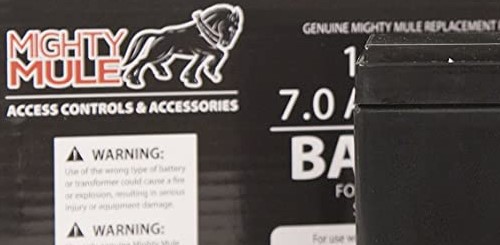Certainly, Apollo gate openers are among the most popular in the market. They’re also quite powerful, moving big and heavy gates effortlessly. From time to time, you need to replace some critical parts of these openers. From this article you can learn in details about Apollo gate opener parts.
Repairing these devices is quite simple. So, you don’t need to spend money on technical service to put your old opener back on duty. In this guide, you’ll learn which are the most important parts of an Apollo gate opener and their functions. That way, it will be easier for you to detect the failure of your device and replace the correct part.
Main Parts of Apollo Gate Opener
Most Apollo gate openers work the same way. The size may change on some models, but the mechanism is always the same. Here’s a list of the most important parts of these openers:
- Control box
- Control board
- Gear housing
- Extension tube
- Spur gear
- Cover tube
- Main screw
- Bearings
- Motor
- Pinion gear
- Motor housing
- Proximity switch
- Smart sensor
Control Box
It’s a plastic box containing all the electric and electronic components of the opener. Inside the control box, you can find the control board, wires, and batteries. You can install the control box at ground level, on a concrete base. You can also install it on the gate, using mounting brackets.
Control Board
The control board is the brain of the gate opener. It’s made up of a series of electronic elements, including sensors, chips, and antennas. With this board, you can also control the motion range of the gate and pair one or more remote controls.
Gear Housing
It’s the metal cover that protects the moving parts attached to the pinion gear that comes out of the motor. The gear housing also prevents the accumulation of dust and other debris between the teeth of the gears.
Extension Tube
The extension tube goes connected to the gate via a mounting bracket. This tube extends to close the door or shrinks to open it. The extension tube is usually made of stainless steel because it permanently remains exposed to external agents.
Spur Gear
The spur gear goes connected to the pinion gear coming out of the motor. Its main function is to reduce the angular speed generated by the motor and increase the inertia. Because of that, the opener can move the weight of the gate more easily.
Cover Tube
It’s the rigid cover that contains the extension tube and the main screw. It also serves as a guide for the extension tube to always follow a straight path.
Main Screw
The main screw goes inside the extension tube. It pushes forward the extension tube when it rotates counterclockwise. Then, it pulls the extension tube when it rotates clockwise.
Bearings
The bearings usually are in areas. Where angular motion is transferring from one element to another. Bearings reduce the touch surface between moving parts, preventing wear and heating. You also need to periodically lubricate them so they run properly.
Motor
The motor is the mechanical device that generates the angular movement. In this case, the motor works with electricity. The relative motion between the rotor and the stator is the result of the electromagnetic induction in the coil.
Pinion Gear
This small gear transfers the angular motion of the motor to the spur gear. Usually, the pinion gear has a smaller diameter compared to the spur gear. It’s also thick, sturdy, and made of steel to resist high pressure.
Motor Housing
It’s the metal cover that protects the motor from external agents. Usually, this housing is sealed to prevent water entrance. In most cases, the housing is bolted to a concrete plate on the ground.
Proximity Switch
The proximity switch automatically stops the mechanism when the gate is fully opened or fully closed. You can control this device from the control board.
Smart Sensor
The smart sensor automatically stops the mechanism and returns the gate to open position where there’s a car or a person crossed in the motion path of the gate.
Conclusion
As you can see, you don’t need to be a mechanical expert to understand how Apollo openers work. In fact, you just need a little common sense. After reading this guide, you can easily identify the source of any failure.
Without a doubt, learning how to repair your Apollo opener by yourself is a smart way to save money. Also, you can earn some extra money by helping other people to repair their devices.





